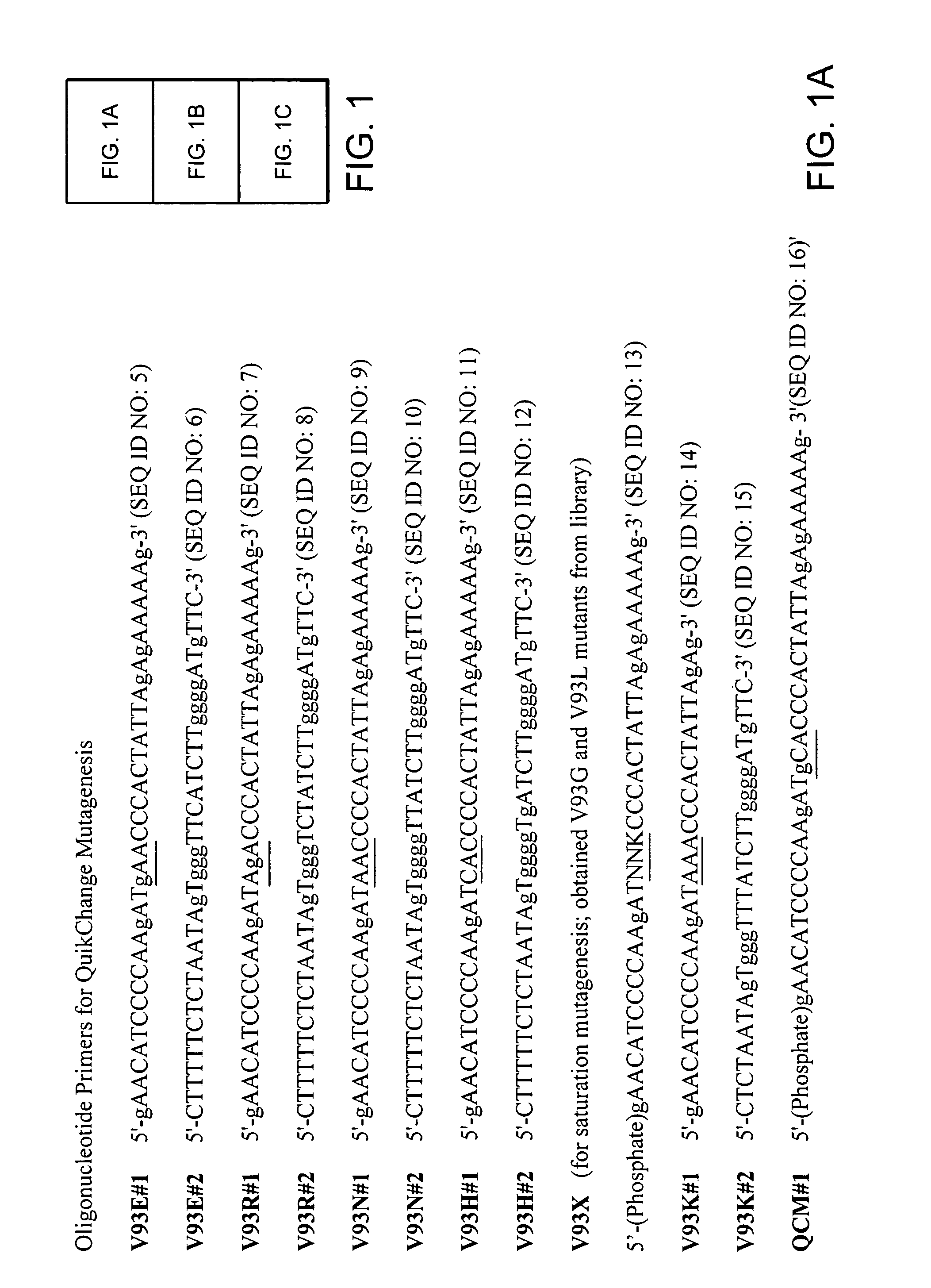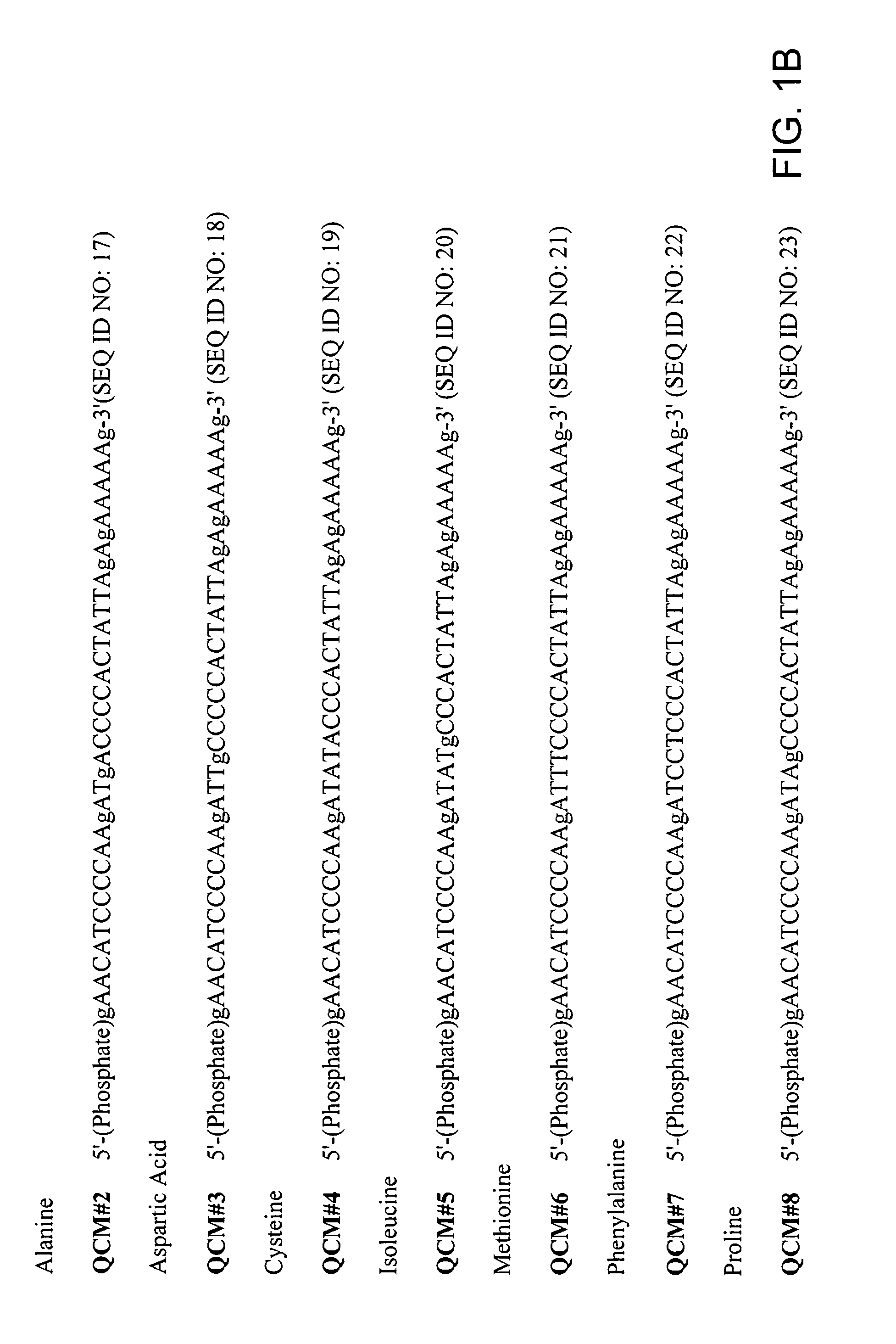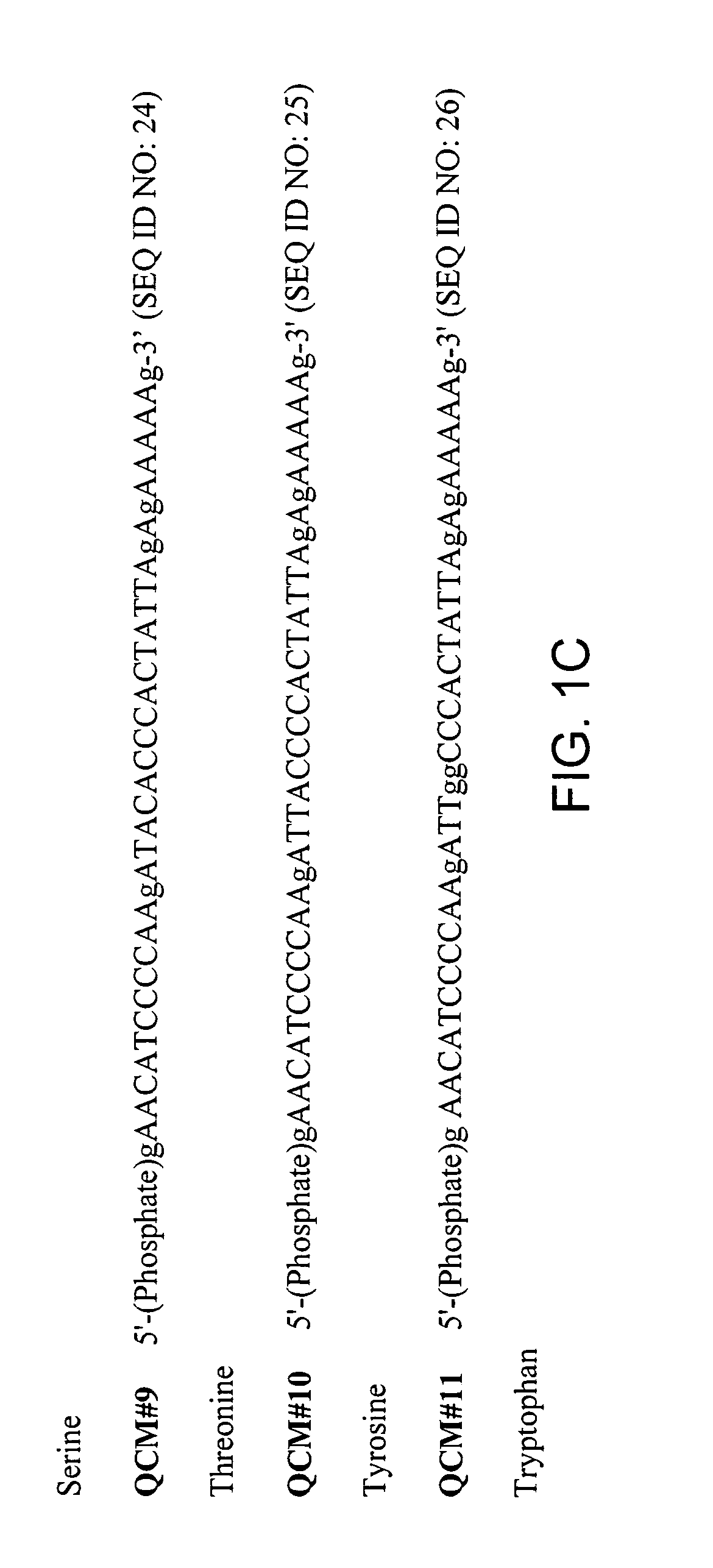DNA polymerase blends and uses thereof
- Summary
- Abstract
- Description
- Claims
- Application Information
AI Technical Summary
Benefits of technology
Problems solved by technology
Method used
Image
Examples
example 1
Construction of Chimeric Pfu DNA Polymerases
[0342]A chimeric DNA polymerase is constructed by combining the domains of different DNA polymerases or a non DNA polymerase domain with a DNA polymerase of the invention using methods that are well known to a person of skill in the art.
[0343]For example, the thioredoxin processivity factor binding domain of bacteriophage T7 DNA polymerase was inserted into the homologous site in E. coli DNA polymerase I. The resulting chimeric thioredoxin binding domain-DNA polymerase exhibits a substantial increase in the processivity of the chimeric E. coli DNA polymerase I in the presence of thioredoxin. (Bedford, E., et al., PNAS, USA vol. 94, pp. 479-484, January 1997, WO 97 / 29209, U.S. Pat. No. 5,972,603).
[0344]Alternatively, the Sso7 domain or the topoisomerase V HhH domain can be added to the N-terminus of Tag or the N-terminus of N-truncated Tag (Stoffel fragment) or the C-terminus of Pfu (as described in WO ol / 92501 and Pavlov et al., supra).
example 2
Purification of Chimeric Pfu
[0345]Plasmid DNA was purified with the StrataPrep® Plasmid Miniprep Kit (Stratagene), and used to transform BL26-CodonPlus-RIL cells. Ampicillin resistant colonies were grown up in 1-5 liters of LB media containing Turbo Amp™ (100 μg / μl) and chloramphenicol (30 μg / μl) at 30° C. with moderate aeration. The cells were collected by centrifugation and stored at −80° C. until use.
[0346]Cell pellets (12-24 grams) were resuspended in 3 volumes of lysis buffer (buffer A: 50 mM Tris HCl (pH 8.2), 1 mM EDTA, and 10 mM βME). Lysozyme (1 mg / g cells) and PMSF (1 mM) were added and the cells were lysed for 1 hour at 4° C. The cell mixture was sonicated, and the debris removed by centrifugation at 15,000 rpm for 30 minutes (4° C.). Tween 20 and Igepal CA-630 were added to final concentrations of 0.1% and the supernatant was heated at 72° C. for 10 minutes. Heat denatured E. coli proteins were then removed by centrifugation at 15,000 rpm for 30 minutes (4° C.).
[0347]Chi...
example 3
Purification of Pfu DNA Polymerase Mutants
[0348]Bacterial expression of Pfu mutants. Pfu mutants can be purified as described in U.S. Pat. No. 5,489,523 (purification of the exo− Pfu D141A / E143A DNA polymerase mutant) or as follows. Clarified, heat-treated bacterial extracts were chromatographed on a Q-Sepharose™ Fast Flow column (˜20 ml column), equilibrated in buffer B (buffer A plus 0.1% (v / v) Igepal CA-630, and 0.1% (v / v) Tween 20). Flow-through fractions were collected and then loaded directly onto a P11 Phosphocellulose column (˜20 ml), equilibrated in buffer C (same as buffer B, except pH 7.5). The column was washed and then eluted with a 0-0.7M KCl gradient / Buffer C. Fractions containing Pfu DNA polymerase mutants (95 kD by SDS-PAGE) were dialyzed overnight against buffer D (50 mM Tris HCl (pH 7.5), 5 mM βME, 5% (v / v) glycerol, 0.2% (v / v) Igepal CA-630, 0.2% (v / v) Tween 20, and 0.5M NaCl) and then applied to a Hydroxyapatite column (˜5 ml), equilibrated in buffer D. The colu...
PUM
| Property | Measurement | Unit |
|---|---|---|
| Composition | aaaaa | aaaaa |
| Thermal stability | aaaaa | aaaaa |
Abstract
Description
Claims
Application Information
 Login to View More
Login to View More - R&D
- Intellectual Property
- Life Sciences
- Materials
- Tech Scout
- Unparalleled Data Quality
- Higher Quality Content
- 60% Fewer Hallucinations
Browse by: Latest US Patents, China's latest patents, Technical Efficacy Thesaurus, Application Domain, Technology Topic, Popular Technical Reports.
© 2025 PatSnap. All rights reserved.Legal|Privacy policy|Modern Slavery Act Transparency Statement|Sitemap|About US| Contact US: help@patsnap.com



